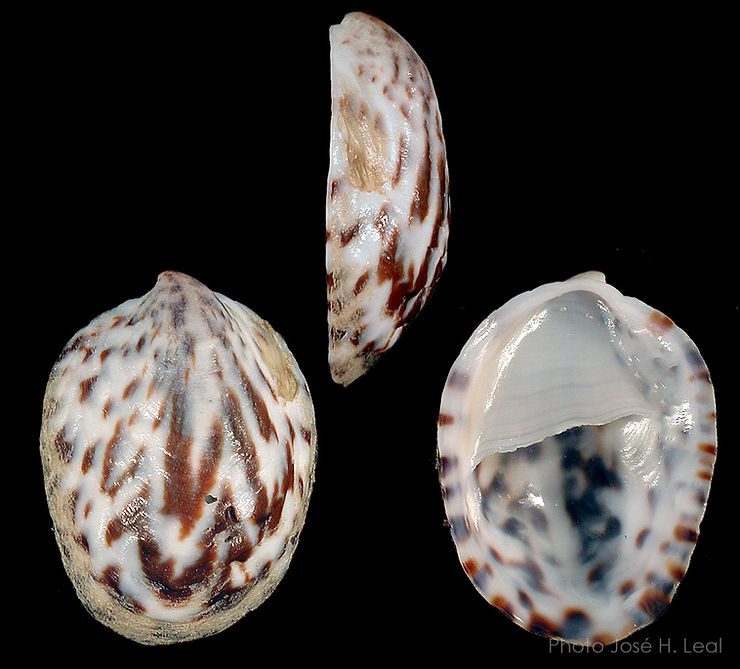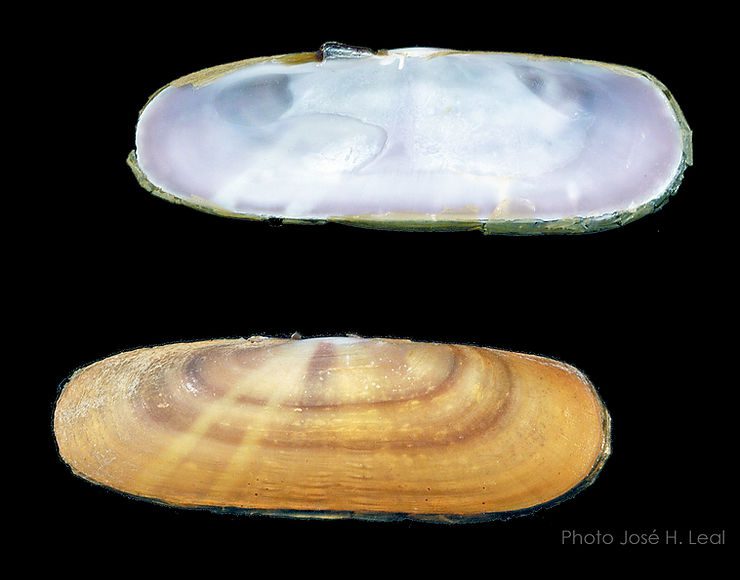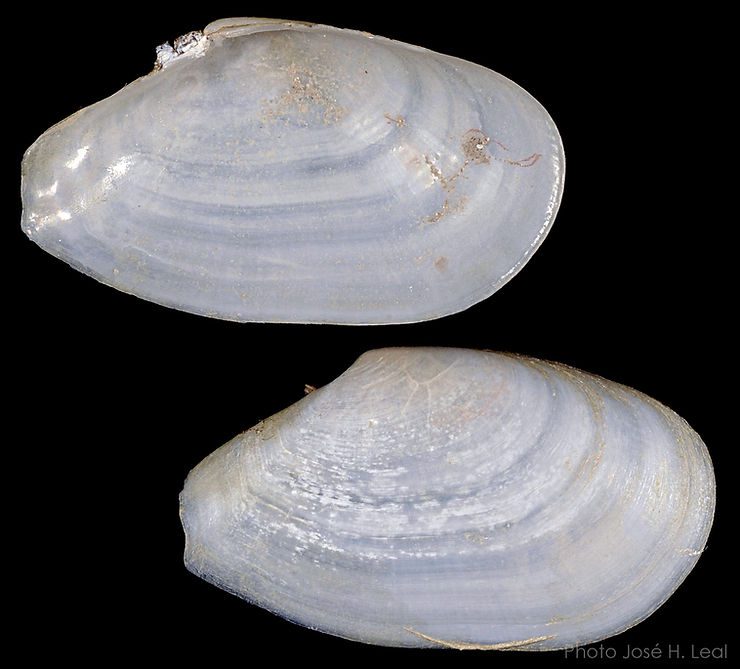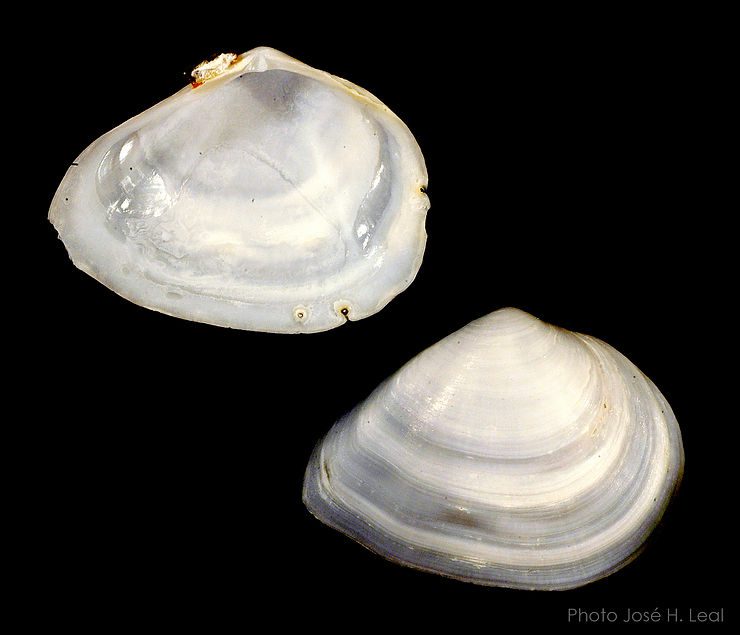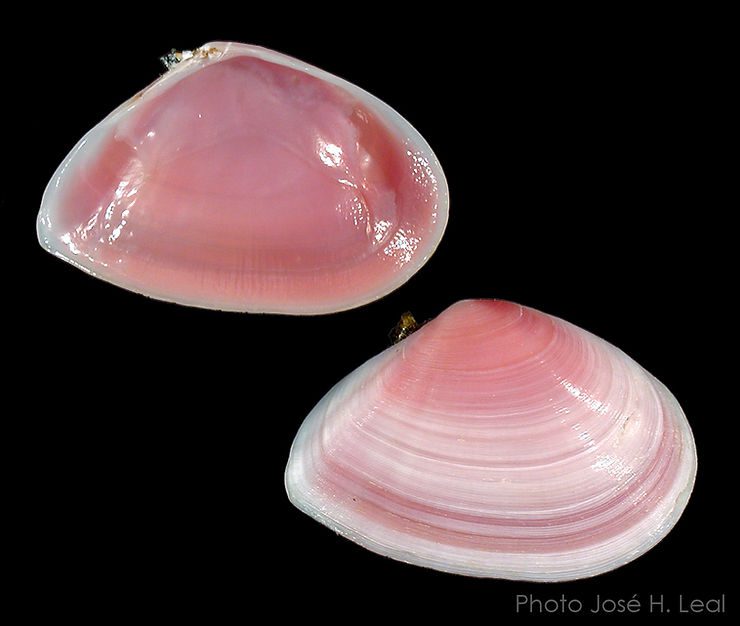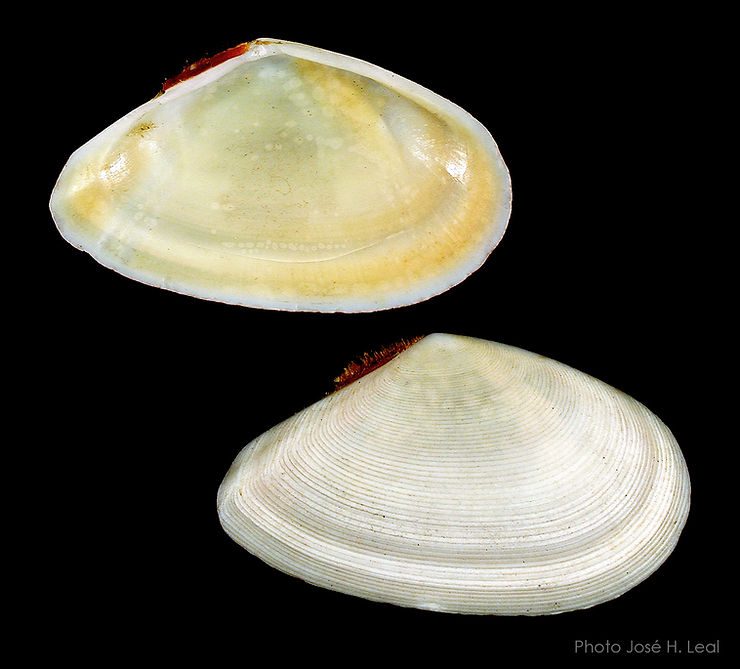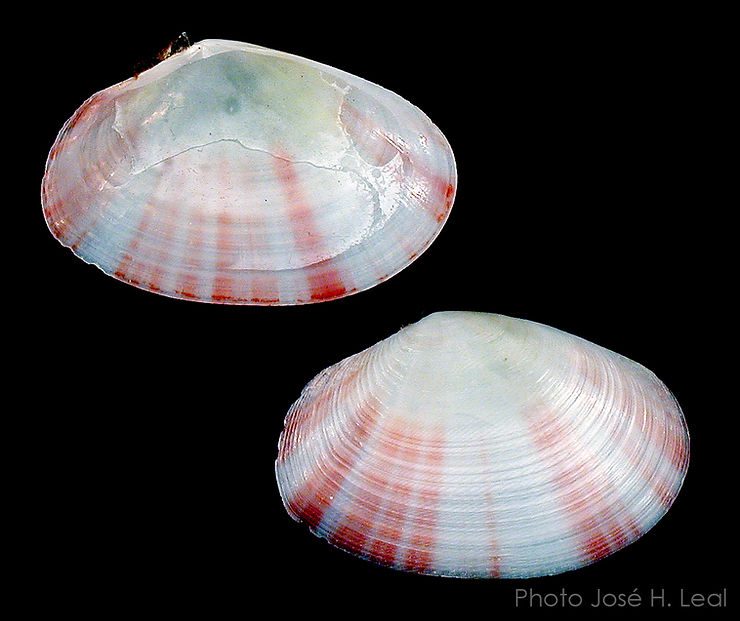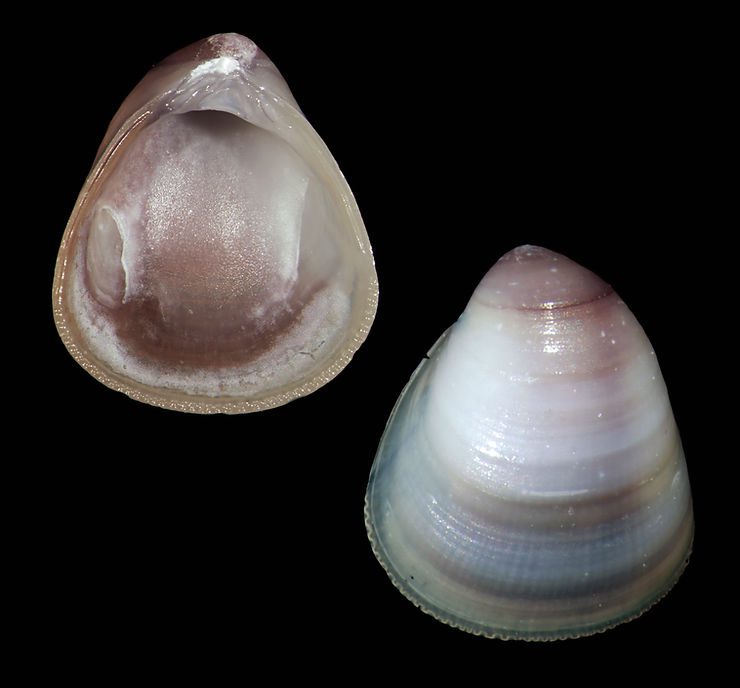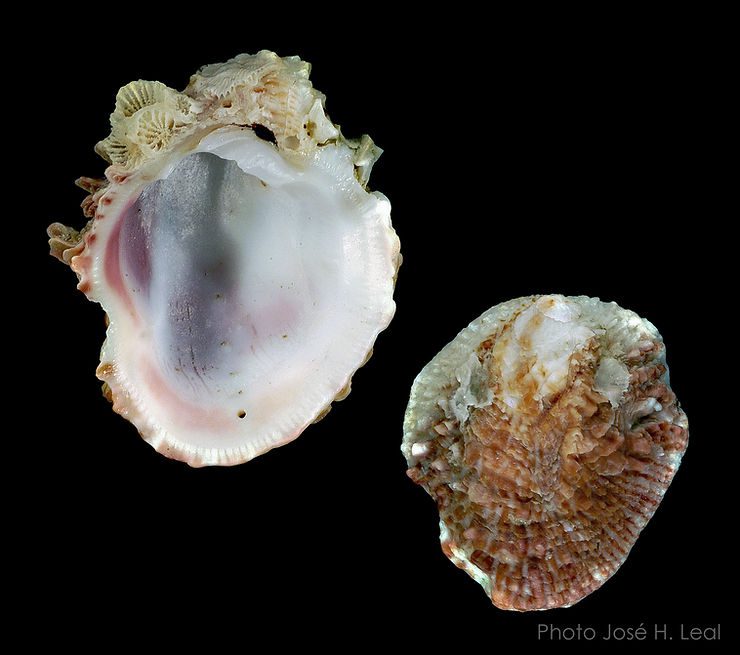
The Corrugate Jewel Box
The Corrugate Jewel Box, Chama congregata Conrad, 1833, resembles another local species of the Jewel Box family Chamidae, the Leafy Jewel Box, Chama macerophylla Gmelin, 1791. The Corrugate Jewel Box differs from this latter however, by its smaller size, never reaching more than 1.5 inch. The sculpture consists of corrugated radial ribs, while in the Leafy Jewel Box it is comprised of scale-like, “leafy” ornaments. Individuals of both species attach themselves to hard substrates by their bottom
